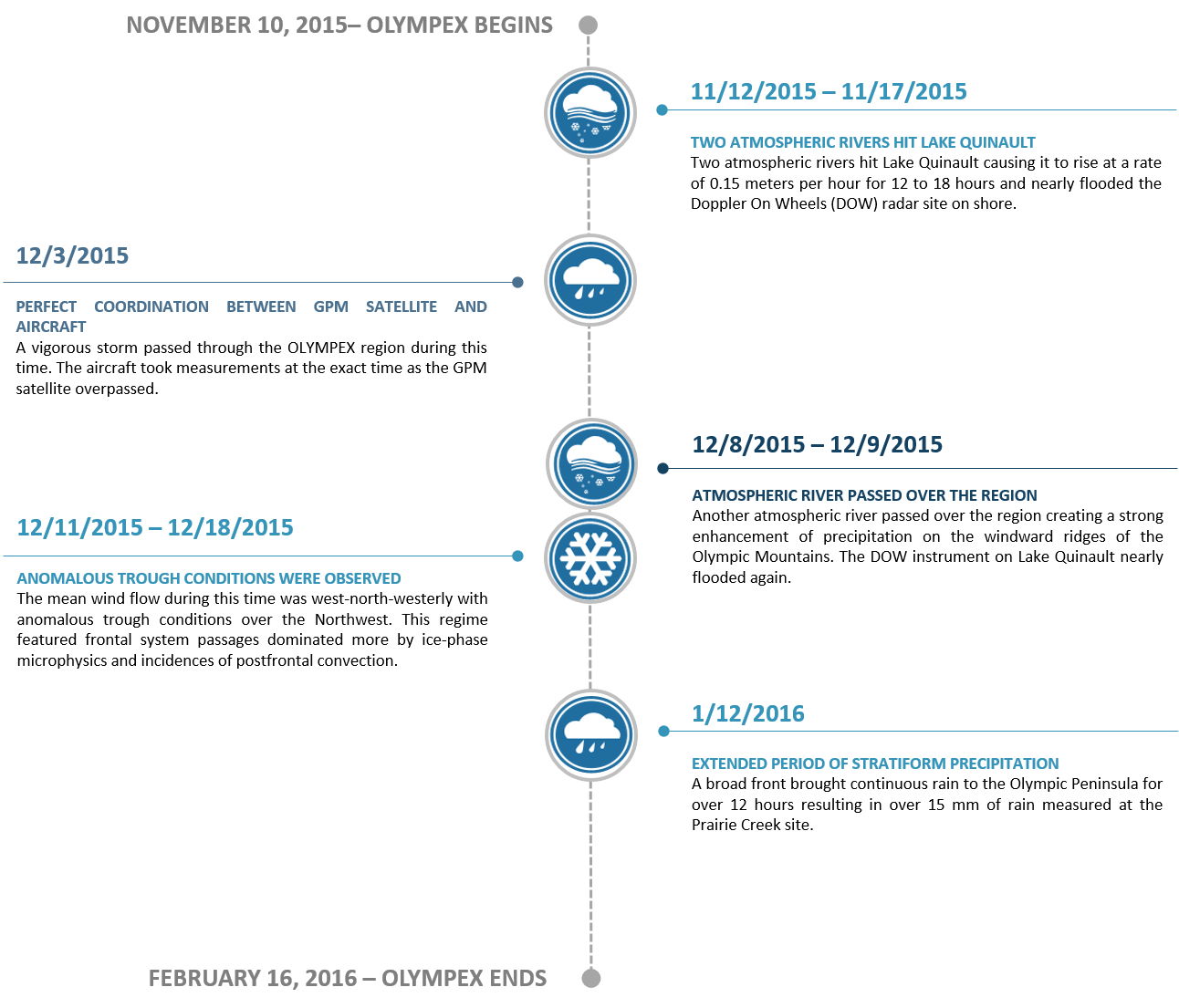Olympic Mountains Experiment (OLYMPEX) Field Campaign
The Olympic Mountains Experiment (OLYMPEX) was a Global Precipitation Measurement (GPM) ground validation field campaign that consisted of a wide variety of ground instrumentation, radars, and multiple aircrafts all which monitored the weather conditions and rainfall dropped by oceanic storm systems as they approached and traversed the Peninsula and the Olympic Mountains. The intensive observing period took place during November 2015 through February 2016.
Scientific Objectives
The primary objectives of OLYMPEX included:
- Verify and validate satellite measurements of precipitation, primarily rain and snow measurements in mid-latitude frontal systems
- Determine how remotely-sensed GPM precipitation measurements can be applied to a range of hydrologic, weather forecasting and climate model data
- Determine changes in precipitation characteristics with elevation change
Instruments Used
Multiple instruments were flown on the UND Citation II, NASA ER-2, and NASA DC-8 aircrafts, as well as installed on ground stations, during the OLYMPEX Field Campaign. The instruments were used to observe atmospheric phenomena, such as atmospheric rivers, precipitation characteristics, and cloud microphysics. The instruments included particle probes, the Advanced Microwave Precipitation Radiometer (AMPR), a Cloud Physics LiDAR (CPL), a High Altitude Imaging Wind and Rain Airborne Profiler (HIWRAP), a Cloud Radar System (CRS), Advanced Vertical Atmospheric Profiling System (AVAPS), and many different types of parsivels and disdrometers. Support data were also collected during the OLYMPEX field campaign, consisting of various satellite, model output, and operational datasets.
Events of Interest
This section highlights events within the field campaign of particular scientific interest.










